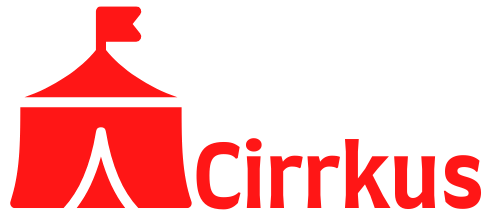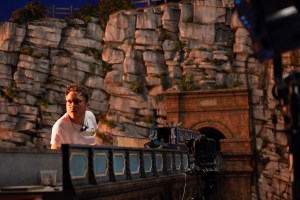Not only is stop motion one of the most complicated forms of animation, it’s also reliant on having some of the most talented, and patient, craftspeople in the business. That’s something Aardman Animations, the studio behind Oscar-nominated film Wallace & Gromit: Vengeance Most Fowl, is certainly known for.
Deadline spoke with six key craftspeople – editor Dan Hembery, cinematographer Dave Alex Riddett, production designer Matt Perry, puppet designer Anne King, supervising animator Will Becher and VFX supervisor Howard Jones – as well as producer Richard Beek and directors Nick Park and Merlin Crossingham, to discuss how they bring their clay puppets to life.
Aardman Animations
One of the most involved scenes in the film takes place at the end, where Gromit pursues Feathers through an aqueduct on a “high-speed” boat chase. This scene was one of the more collaborative in the film, requiring every department to lend a hand.
“For stop motion, its purest form is so linear,” says producer Richard Beek. “You set up the set, you put the characters on it, you frame it and you film it, whereas suddenly you have this sequence where all the departments have to work together to collaborate on the scene.”
“It’s very much about bringing a Hollywood feel to a small town,” says director Merlin Crossingham.
“That’s kind of Wallace & Gromit humor, isn’t it?” adds director Nick Park. “Where we take an unknown part of Lancashire and give it Hollywood status. So, we made the bridge a lot taller than it would be in reality.”

Aardman Animations
To achieve that “Hollywood feel”, the gorge that the aqueduct runs over was created as a miniature set, since creating a set that large on the same scale as the puppets would take too much space. “We did use a few different scales on there and we had to film some things separately, like the Norbots hanging over the edge of the aqueduct,” says cinematographer Dave Alex Riddett. “That wouldn’t have been easy to shoot full size on a set that would have had to be enormous.”
“We made some decisions early to try and keep it all very stop frame feeling and do it all in models,” says production designer Matt Perry. “The very technical side was shrinking down the camera moves. If we were doing a move on the real pieces on the barge that were all flying around everywhere, we’d have to try to emulate that or even shrink the move and do it on the miniature model as well.”

Aardman Animations
An additional layer of complexity was the water in the aqueduct, which characters needed to be able to interact with. “Probably the most complex one would be Wallace falling in,” says VFX supervisor Howard Jones. “When he was being animated, we didn’t really know what the water was. So, we put a laser line in just to allow us to get some idea of where the water is going to be. We can make the water fit around the animation, but it’s much harder to do it the other way around.”
“Chase sequences are always quite exciting in stop motion, because you’ve got to animate the camera as well as everything else,” says supervising animator Will Becher, who worked closely with both Perry and Riddett to figure out how to animate on the sets. “We did things like having these huge boats skidding along the aqueduct that involved loads of work. First, how do we get a boat up out of the water onto this hard edge? And then we’ve got puppets on top that need to react to the motion as well and feel realistic, and we’ve got bits of vegetables, which are actually, physically there, just rolling around on top. Then we’ve got a diamond in a bag to look after and Feathers… We love a challenge and it ticked all the boxes in terms of complexity.”
Even outside of the aqueduct chase sequence, bringing back and animating Feathers McGraw was a separate challenge altogether. “A lot of the puppets kind of disappeared after The Wrong Trousers,” says Park, “so we were looking at references the whole time trying to measure. We had to slightly reinvent Feathers a bit based on just photographs and old drawings.”
Working with puppet designer Anne King, Park and Crossingham managed to create a newer version of Feathers for the film. “He’s got a very particular interior structure,” says King. “The head is very crucial. The relationship between the beak and the size of the eyes, and the sculpt of the head with the exact slope of the top of the brow… all of that has to be really perfect, because any little bit that moves makes a difference.”

Aardman Animations
Any small defect or difference in appearance will be noticeable on a character like Feathers, since the appearance is simple but difficult to animate. “Nick Park has a talent for making characters look simple, but they’re actually made of really complex shapes,” says Becher. “With Feathers… it’s a kind of performance where you’ve got to almost not touch him. We found in early testing that if we give him too much, he gives too much away and becomes a bit weaker as a character.”
“What they can do with these tiny puppets is remarkable, but from our end in the edit it’s about allowing him to be on screen and just be still,” says editor Dan Hembery. “And that’s terrifying. That’s also where the comedy comes in, because we are treating this master villain so seriously, but he’s a plastic penguin in a rubber hat.”
Although they weren’t able to use a copy of the original Feathers from The Wrong Trousers, Crossingham says it was not a bad idea to recreate the character. “Even if you are sort of resurrecting a character, these films are often a chance to evolve them to be right for now. So, Feathers is probably more what we think he should be, rather than an exact carbon copy of what he was.”
While Feathers had to be made entirely of plasticine clay, except for the metal armature inside, Aardman mostly uses a mixture of silicone and clay in their puppets. “Previous Wallace & Gromit puppets were completely clay, and it’s quite laborious for an animator to move Gromit on a walk, for example, because you have to re-sculpt every single movement you do,” says King. Clay pieces are usually saved for parts that need to change constantly or be more expressive, like Gromit’s ears.

Aardman Animations
On the other end of the spectrum from Feathers, Norbot became a puppet made entirely of silicone to emulate his inorganic nature. “Norbot is the only character that doesn’t employ clay, but has a finished look of clay,” says Park. “So, he still has the texture and slight fingerprints, but it’s all covered in silicone.”
“He’s essentially a machine that Wallace has made and we needed to keep that in mind while we were developing him, that his shapes are generally less organic than the other cast members,” adds Crossingham.
Though the mechanical nature of the character comes across mostly in how he is animated, King says a lot of time was spent doing the sculpting. “We had Norbot and then the army of Norbots, which were the second version, so we had to look at how we could differentiate them from the original Norbot,” she says. “The main Norbot’s got a warmer paint color on the face, and then the army has a more grey, sinister tone and a bit of shadow around the eyes as well to make them look a bit more evil.”
After the sculpting is done, the puppets are separated into pieces, and an interior armature is made of steel ball-and-socket joints which can be used to animate the character. Norbot’s puppet was then cast entirely in “a very soft silicone so that will give us a nice movement with the puppet, but also Nick and Merlin wanted to keep that slight look of clay about him,” adds King.

Aardman Animations
Though the build of the puppets may have changed, the hand-crafted style of Wallace & Gromit certainly has not. “In terms of puppets, the way we build them, the amount of silicone versus plasticine clay changed because that does help in terms of speed, but all those changes have to complement the aesthetic of Wallace & Gromit,” says Beek.
Maintaining that aesthetic has always been essential to both Park and Crossingham, and even to the newer members of the crew who have grown up with Wallace & Gromit. “My fantastic crew… all of them are grown up with things like The Wrong Trousers and a lot of people actually got into this business because they saw it as kids,” says Riddett, who worked on The Wrong Trousers with Park. “We really hit the ground running on this project because all the people who worked on it, particularly my camera lighting team, were such fans and so embedded in that world of Wallace & Gromit.”

